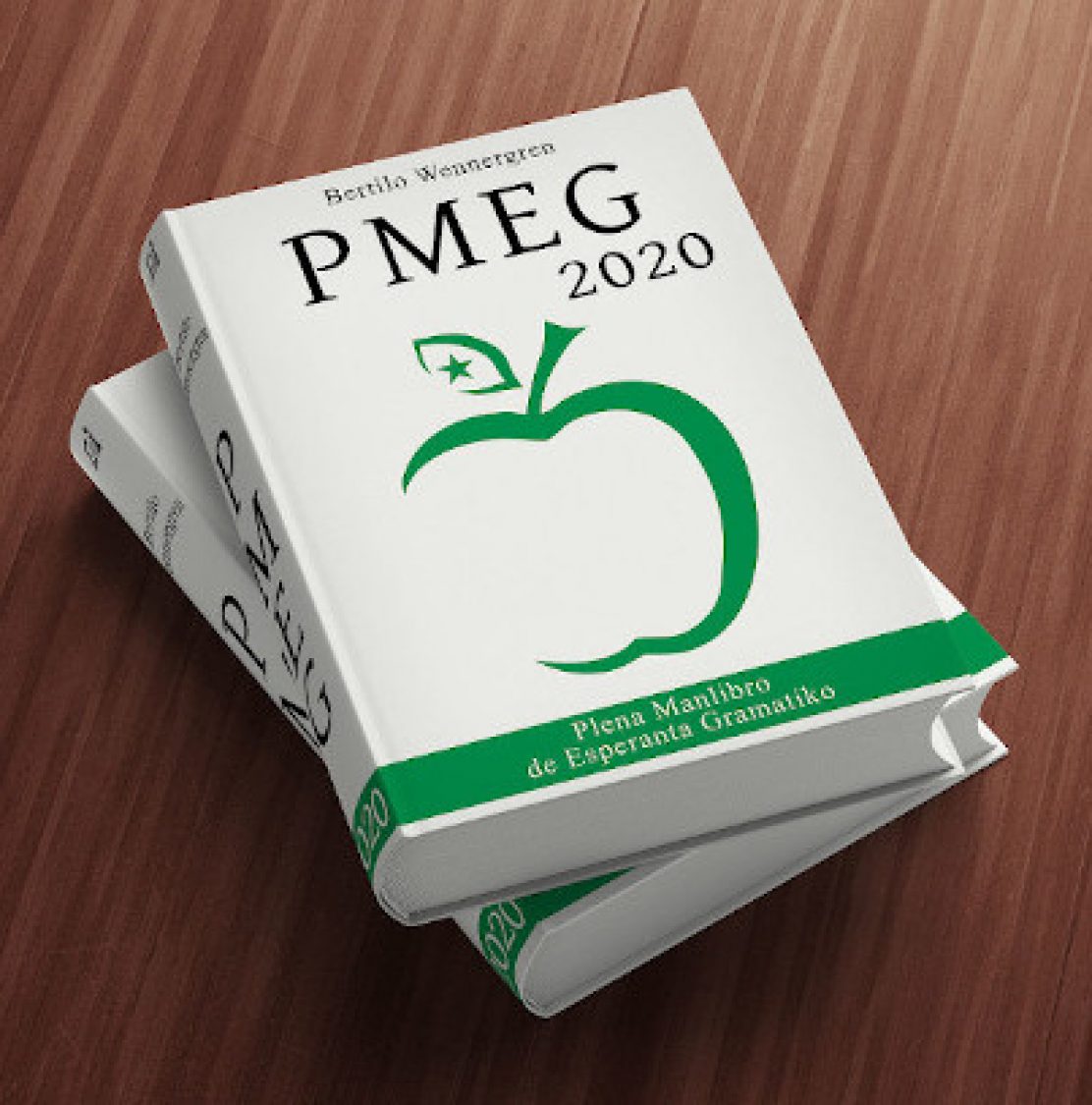So what is PMEG (“Plena Manlibro de Esperanta Gramatiko”) then? If you’re a beginner you might not have heard about the book, or perhaps you’ve wondered what the big deal is.
The name means “Complete Manual of Esperanto Grammar”. Is it really complete? And is it really a manual?
I think “manual” is a good description. It’s a grammar, and more, and I really don’t expect you to read it through like a novel. It’s meant to be a tool to use when you wonder about some particular topic of grammar, word building, syntax etc. You look it up and then you put the book back on its shelf. Or you continue to read… Many say that they usually find much more than they were looking for in the first place. I tend to go into a degree of detail that many wouldn’t even dream of. And there are actually people that have read it from cover to cover, even more than once. At least they claim they have. Crazy! Even I haven’t done that!

The first word of the title, “Plena” = “Complete”, was actually something that the first person who wanted to publish PMEG insisted on. There were already several major Esperanto reference works (dictionaries and grammar books) that used that word in the title: “Plena Vortaro”, “Plena Gramatiko”, “Plena Analiza Gramatiko”, “Plena Ilustrita Vortaro”. So he insisted that I use it as well. In the end he didn’t have the funds to publish the book after all, but the name had already stuck.
I guess PMEG is as complete as I could make it, but I’m still working on it. The first edition as a dead-tree book was 700 pages. The current draft of the next edition runs at 750 pages (and I’ve made the print slightly smaller and more compact since I don’t want it swell to 900…). And I’m far from done. I have a long to-do list that keeps getting longer even though I try to check off the tasks as fast as I can.
Some people are shocked by the size of the grammar of a language that is supposed to be simple. Maybe you’ve heard about the famous “16 rules” of Esperanto grammar. They are supposed to be the whole grammar. Well, I’m sorry to inform you that you’ve been had. That was never true. The 16 rules are just a summary of the main points of Esperanto grammar. The language itself was always much more. It’s regular, for sure, but it’s a human language, and all human languages are complex and hard to pinpoint if you really try to specify the rules. Esperanto is no exception. Actually, even though I was a fully fluent speaker when I started writing PMEG I still discovered new things myself while writing it. I even had to correct a few details that I had been getting wrong. I only found that out when I delved into the material at the nano level. It was fun! But a whole lot of work.
I started out in 1991, building on a smaller grammar book that I had written for Swedish speakers. In 1994 after about four years of hard work the text was (kind of) complete, and I had it published on that new fancy interweb thing (having to learn HTML just for that). And there it is, still free for all to read and download. I still tinker with it, like I’ve done for the last 28 years, finding new stuff to add, things that can be explained better. And I even correct things that I got wrong the first time. No one is perfect, right?
In 2005/2006 I was able to publish PMEG as a book at last, with the help of ELNA, “the Esperanto League for North America”, now calling itself “Esperanto-USA”. And it was a success. By now PMEG has replaced the old “Plena Analiza Gramatiko de Esperanto” (PAG) as the main reference work of Esperanto grammar.
But the first edition is sold out. A new one is much needed. The current web version has so many important changes that need to be made available in paper book form as well. But there is still much work to be done before I dare commit the whole thing to paper again. And I really need your support to be able to do that. I do want to spend my time devoloping PMEG and other Esperanto projects (more on those in another post). But while I do that I also need to eat and pay the bills.
So if you have a dime to spare and would like to support my work you can head over to Liberapay and check out my crowd funding page there.
Yes, I know. PMEG is written entirely in Esperanto, and you as a beginner might find it hard at first. But I do try to explain in as simple a way as possible, using a limited vocabulary, and many say that they quickly get the hang of it. So do try! And once you’ve progressed a bit further it will be much more accessible. Trust me! And then there is also the smaller version of PMEG, the “Detala Gramatiko de Esperanto”, also called “Detala lernu!-gramatiko”. Check it out at the lernu! web site!. I wrote that one as well, using a more traditional terminology. And it’s been translated into several languages, e.g. English.
Actually next on my list, once I get PMEG done and published again, is an updated version of the “Detala Gramatiko”. Always more to do…
